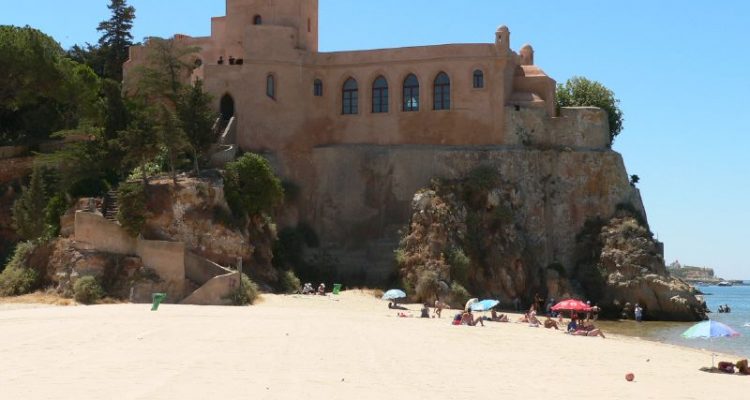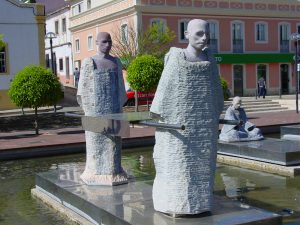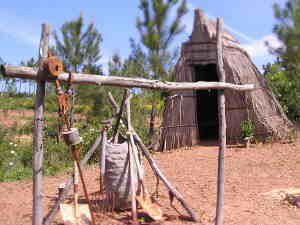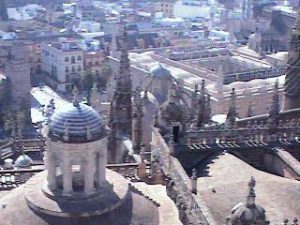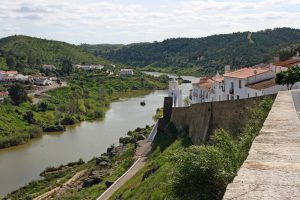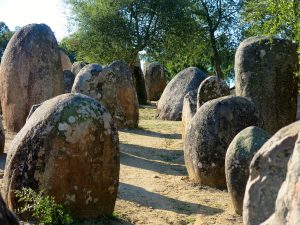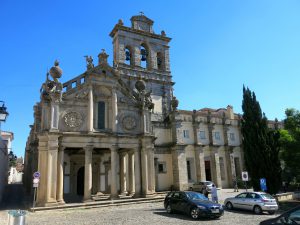Day tours, discover if you took off the beach and Lagos has discovered, then there are still more at and above the Algarve.
| Silves – about 30 minute directions – on the Hill, where today the Castelo dos Mouros is above the city, Iberian native Americans settled in the Neolithic (5.000-2000 BC).
Silves was built on the river Rio Arade, which is crossed by a Roman bridge. Silves Bishop city was temporary. In the surroundings of Silves, on the Hill of the city, they found remains from the copper age. These are relics of a peasant culture, the “stones” in the district are attributed to the already. As the oldest city of the Algarve, Silves was no later than in the 4. Century v. BC under the name of Cilpes initially settled by the Phoenicians and the Carthaginians. The origin of the settlement is about to 1000 v. BC dates. On the “Rocha Branca” (white rock), a hill was found not far from Silves, objects coming from Greece, Phoenicia and Carthage. Thus demonstrated that already at that time a lively long-distance trade was operated. In addition, you could found coins with the inscription “Cilpes” in the year 206 up to 40 v. Ad date. |
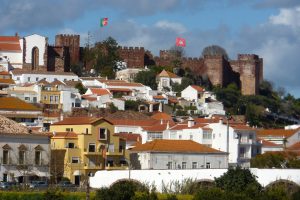
|
| Excursion to the FIESA in Pêra approx. 35 minute drive away. Since 2003 is the year annually on the Algarve von Mai to October the F I E S A place. This hiding behind the word “Festival international de escultura em Areia”-an International Sand Sculpture Festival, founded by Turkish sculptor Alper Abbas in life and by the FA since 2002. ProSandArt, Organização de eventos CULTURAIS, LDA is organized with seat in Pêra. Artists from all over the world form a truly huge figures/scenery worked sand, that thematically fit with the motto of the respective exhibition. Timetables:
|
|
|
https://youtu.be/Jb7nbaiLoFw |
|
| Excursion to the Parque da Mina, approx. 40 minutes away. An old manor house with its large park in the mountains of Monchique is open to the public since July 2005. The featured Park is a mix of living natural history and local history museum with the characteristic fauna of the Monchique mountains, its animals, and old equipment. Extensive grounds, a disused copper mine – hence the name is “Parque da Mina”. Parque da Mina click |
|
| SAGRES and the first cult approx. 45 minutes away. The story and the myth of SAGRES are closely associated with what was dubbed for centuries across as leisure off point of the known world: the Cape of São Vicente. Surrounded by a mysterious and respect rafting a aura, in scene set by dark waters, the cliffs, the wind and the rough, wild vegetation, this mystical touch is still felt. Here at Cape it was also where the infant D. Henrique founded his seafaring school, decisively contributed to the discovery of the new world. In Sagres, the globalization of the world started once. Click SAGRES |
|
| Seville, with the car in 2 1/2 hours, is the capital of Andalusia, and Berlin – not only as the setting of operas like “Carmen”, “The Barber of Seville”, “Don Juan”, “Figaro’s wedding”, which play in the streets and palaces of Seville, but also because of its very beautiful townscape (many well preserved town palaces) and its monuments (z. B. the Cathedral and Moorish Alcázar Royal Palace). A day trip, you can look at only the main attractions and get an impression of the city image. |
|
| The tour in the 2 hours, the medieval town of Mértola – picturesquely located – takes you above of the Guadiana river in the province of Alentejo, the Northern “neighbours” of the Algarve. There, in the summer, it is hotter than in the Algarve – the trip is therefore recommended only on cold days in the other seasons. Mértola is located about 70 km northwest of Vila Real de Santo António, and is easy to reach via the well-developed EN 122. |
|
| Beja – the capital of the District of Beja, of the lower Alentejo – is approximately 150 km from the Algarve and within 2 hours by car to reach. Due to its exposed location, Beja already by the Romans was settled and built as a fortress. From the Roman city of ‘Pax Julia’ was then with arrival of the Visigoths (approx. 430 n.Ch.) a Bishop’s seat, later the Moors conquered the town, which they called “Baxu”. In the 13.Jahrhundert, the city in heavy fighting between Muslims and the Christian conquerors was completely destroyed. The port. King Afonso III (1245-1279) rebuilt the city. The sights of Beja are: Pelourinho Beja, Roman dam Muro da Prega, Roman villa of Pisões, monastery of Sao Francisco, the regional Museum Núcleo Visigotico in the former Church of Santo Amaro. The square Largo do Lidador in Beja arrived, one sees the tower Torre de Menagem. This granite in the 12th. Century Tower built in Portugal’s highest Castle Tower is 40 m. You can climb the tower. On the square Largo Santa Maria rises the Church of Igreja de Santa Maria, with red tiled roof and white whitewashed is. By lovingly tended parks, you walk along in the direction of a pedestrian street with shops and restaurants. Various traditional fairs take place in the second half of May and the beginning of October. Click Beja |
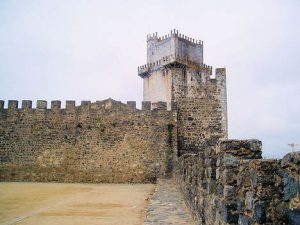
|
| Évora – prehistoric and megalithisch, erreicbar in 3 hours by car. In the surroundings of Évora, you will find the best preserved and most important Megalithmonumente in Portugal. This “megaliths” are 2-4 m large stones that are usually roughly edited 4000-5000 years ago, to circles (Cromlech) or tombs (dolmen, port. “anta”) were erected. |
|
| Évora – located the capital of the (political) District of Évora (identical to the historical province of “Alto Alentejo”) on a small hill, it dominates approximately The unique silhouette of the Cathedral City with 50,000 inhabitants the surrounding flat and dominated by agriculture (sheep herding, Cork extraction) landscape. Because of the many monuments from the Roman and Moorish periods, as well as from the middle ages and the city wall preserved for the most part, Évora is regarded as “Museum city” (Cidade Museu). Evora click |
|
